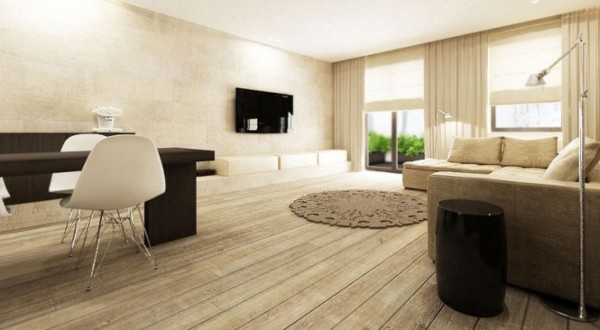Let’s face it; we all love the look and feel of a nice wooden floor. But wooden flooring is not only expensive, a number of precautions need to be taken while laying it. It needs to be laid out on a completely dust & moisture free base and is also a tad bit difficult to maintain.
We aren’t dissuading you from getting it installed but just wish to make you aware of some steps you should observe before the planks are tiled.
Where should you ideally install a wooden floor?
- Avoid areas that could be prone to seepage and termites. For this one would have to ensure that the foundation is termite proofed and the plumbing is proper. Else the floor would get spoiled.
- Avoid using wooden flooring in the basement, as waterproofing in basements is often an issue.
- Any area which is exposed to heat or extreme weather conditions should also be avoided. So getting a backyard deck, with wooden flooring, may not be a good idea.
However, wooden flooring in the living room/ bed rooms/ offices does add a lot of vintage charm to the house/office. Here are some steps you could follow while installing the same:
With dry concrete and the right sub-floors and vapor retarders, solid hardwood floors can be installed on slabs that are either at ground level or above ground level. If you insist on wooden flooring in the basement, you could use engineered wood floors made of layers of wood glued together.
Protect the Flooring
Ensure that the building is completely enclosed and the windows and doors are installed, before the floor is placed. In fact all concrete, masonry and sheet-rock should be completely dry. In warm weather, the building should be well ventilated
Dry Slab
The concrete on which the sub floor will be placed should be dry. In fact, wooden flooring should not be laid over concrete that is less than 60 days old.
Testing for dryness, starts 30 days after the concrete has been laid. By now, you would have realized that determining moisture content of both the wood flooring and the sub-floor is an important part of quality control in the flooring installation process. Detailed qualitative and quantitative testing methods are provided by the National Wood Flooring Association.
The Concrete
The concrete floor should be flat and should have a trowel finish, free of grease, oil, stains and dust. So you’d need to grind off any high spots and fill any low spots.
Vapor Retarder
Layers of asphalt felt with asphalt mastic or 6 mil polyethylene sheathing could be used as vapor retarders on top of the concrete, to ensure that if any moisture enters the concrete, the wooden flooring is not impacted by it.
Sub-floors
Solid hardwood floor planks are usually nailed on the sub floor; hence it is extremely important that the quality of the sub-floor is maintained.
Once the sub-floor is installed, the hard wood planks are nailed onto it. Making the flooring secure.
Acclimation
Flooring is considered acclimated when the moisture difference between the wood and the subfloor material is within 4% for flooring less than 3” in width. For any flooring 3” or wider the difference should be within 2% mc. Without a proper moisture meter, you cannot determine if the flooring has been properly acclimated.
Maintenance:
Avoid using water/ oil based products to clean the floor. Use a vacuum cleaner preferably, to suck any dust that may have gotten stuck in the crevices between the tiles.
Ensure that the room with the wooden flooring isn’t exposed to moisture. Use dehumidifiers if the humidity levels increase.
Use small mats near outside doors to prevent the dirt getting further into your house.
Take a look at the hard wood flooring on BuildingBlox.in: http://ow.ly/N4OUs



